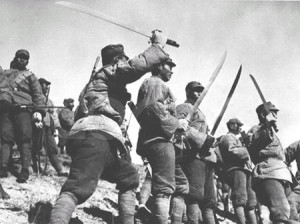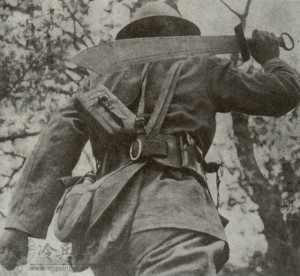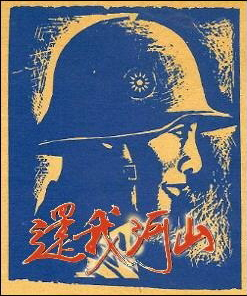Modern War by Medieval Means: The Chinese Sword
- By Peter Harmsen
- 18 November, 2013
- No Comments
 Westerners watching the early stages of the Second Sino-Japanese War often noticed that the Chinese troops moving into battle were carrying large swords, in addition to their more modern equipment. Some foreign observers appear to have considered it an exotic, slightly quaint weapon to wield in a conflict which also involved the full lethal array of 20th-century equipment from tanks over airplanes to gas. But truth be told, there was nothing quaint about the Chinese sword, or dadao.
Westerners watching the early stages of the Second Sino-Japanese War often noticed that the Chinese troops moving into battle were carrying large swords, in addition to their more modern equipment. Some foreign observers appear to have considered it an exotic, slightly quaint weapon to wield in a conflict which also involved the full lethal array of 20th-century equipment from tanks over airplanes to gas. But truth be told, there was nothing quaint about the Chinese sword, or dadao.
In the hands of an expert, it was a terrifying weapon, as the video below shows. The massive destructive force of these few inches of steel explains why there was also a constant undertone of admiration, or even awe. “The Chinese used big sword with very telling effect,” a foreign correspondent reported in a dispatch about a battle north of Shanghai in early September 1937.
The dadao has a history of centuries in China. It’s not a very sophisticated weapon and comparatively easy to produce, and therefore it’s been the weapon of choice for rebel armies through the ages, including the Taiping insurgents in the mid-19th century and the Boxers around the turn of the 20th century. As inexpensively equipped mass armies emerged after the collapse of the empire, the sword was also a favored weapon. The Chinese used it when defending the Great Wall against Japanese attack in 1933, and again in 1937 during the battles along the lower Yangtze, the weapon played an important role.
 It’s likely that the effect was as much psychological as anything else. There is something profoundly terrifying about a long line of men approaching with swords drawn – or more likely, in recent times, bayonets fixed. As military historians have noted, it is by no means a given that bayonet charges actually are followed through to the end. Just as often, the two sides start shooting before getting close enough to stab each other, or the defenders break up in panic and flee the battlefield.
It’s likely that the effect was as much psychological as anything else. There is something profoundly terrifying about a long line of men approaching with swords drawn – or more likely, in recent times, bayonets fixed. As military historians have noted, it is by no means a given that bayonet charges actually are followed through to the end. Just as often, the two sides start shooting before getting close enough to stab each other, or the defenders break up in panic and flee the battlefield.



 Copyright © 2025
Copyright © 2025
Leave a Reply